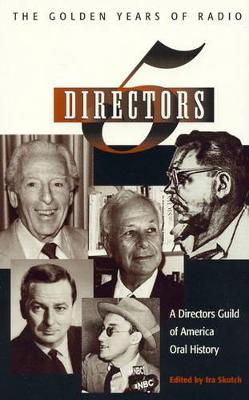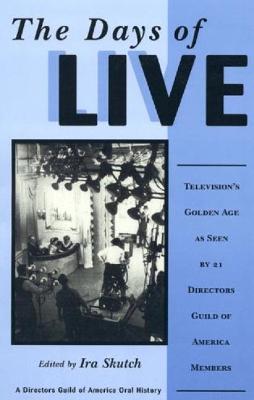Directors Guild of America Oral History
3 total works
The book follows the author's career in radio and television, detailing the workings of NBC in the forties, the Philco-Goodyear Playhouse and a large Madison Avenue ad agency in the fifties, and the fabled Goodson-Todman organization from the sixties to the eighties, with fascinating accounts of early political campaigns on television and the days of the blacklist.
Five Directors collects the fascinating memories of some of radio's most vivid personalities: Himan Brown, Axel Gruenberg, Fletcher Markle, Arch Oboloer, and Robert Lewis Shayon. They explain in their own words their journey through radio broadcasting, how it affected their lives, and how they saw it affecting the consciousness of a country. Their histories are not just stories of success in early twentieth century America, but individual portraits of the roller coaster changes in lifestyle that swept the United States. Radio delivered not only entertainment, but up-to-date news, from Charles Lindbergh's transatlantic triumph, to Roosevelt's comforting Fireside Chats during the depths of the Depression. Five Directors is witness to the triumphs of radio, and brings its enormous impact home with clear, personable narratives and prose. It includes a selected list of credits for each director and a handy index, making the book a breezy, useful tool for anyone fascinated by or nostalgic about America's first nationwide entertainment industry.
The Days of Live is a fascinating account of the era of live television. This brief period in the long history of entertainment glistened for approximately ten years, from shortly after World War II until the end of the 1950s, when the advent of video tape and the ascendancy of film programming caused it to fade into oblivion. Compiled from the first-hand accounts of twenty-one members of the Directors Guild of America who were instrumental in shaping the medium during this formative phase, the book covers the development of network programming, technical advances, sponsor relations, and the blacklist. The Days of Live describes the transition from black-and-white to color, and documents early landmark series such as Philco Television Playhouse, Studio One, Kraft Television Theatre, Hallmark Hall of Fame, Climax, Producers Showcase, and Playhouse 90. It includes personal, detailed, and often hilariously funny stories of television during its awkward infancy and the men and women who struggled to popularize and standardize its procedures. This book is filled with the words of America's earliest television workers, those who began television's meteoric rise to an unavoidable feature of the cultural landscape.


